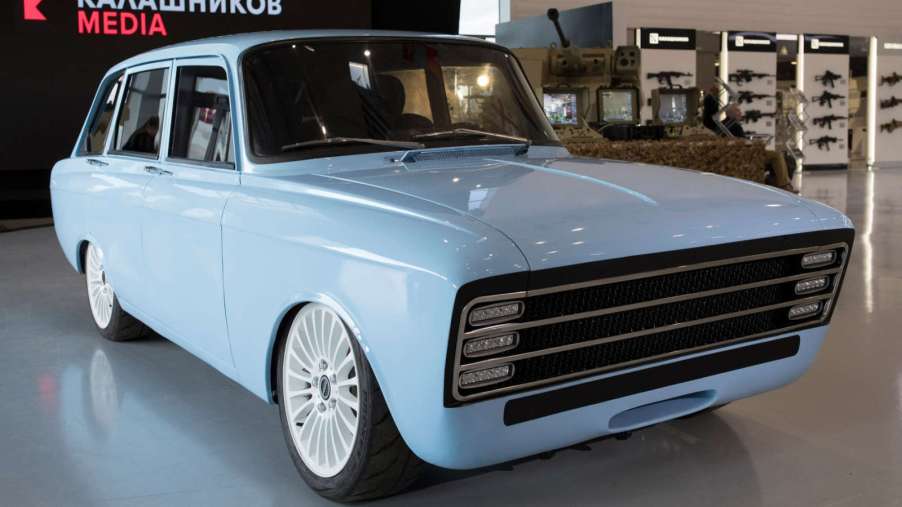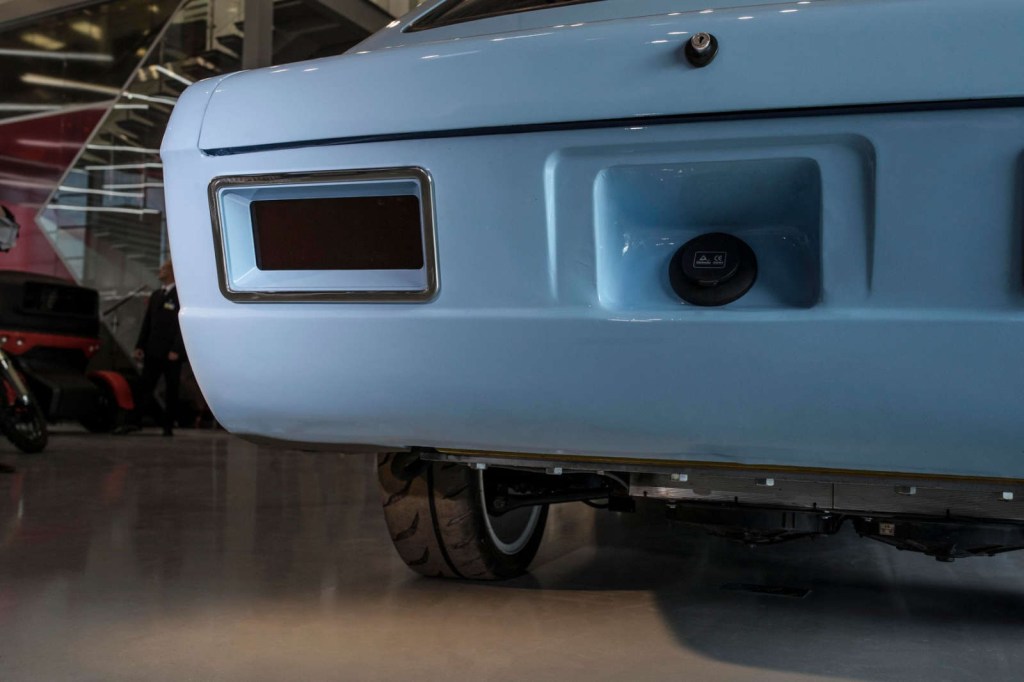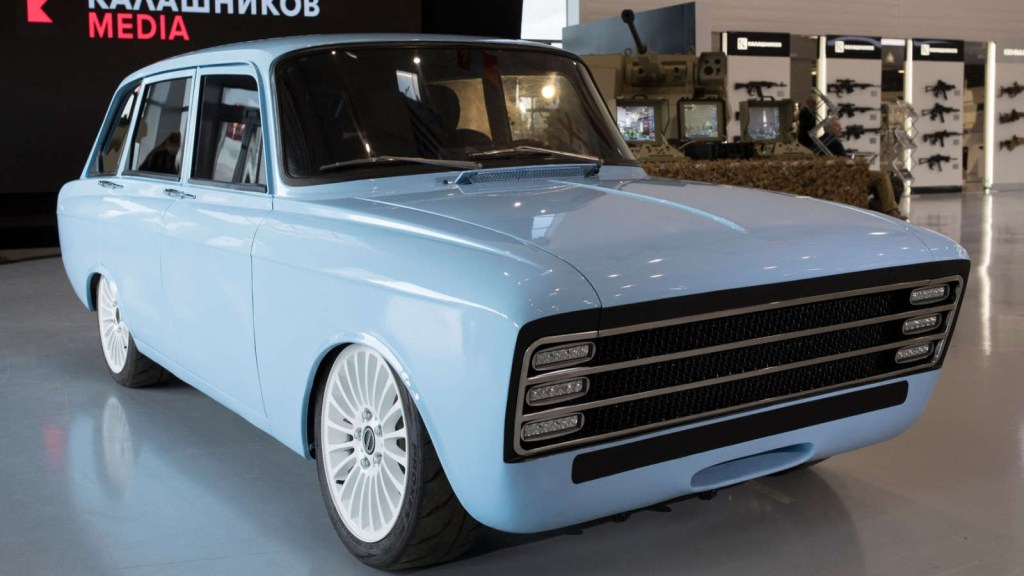
The Russian Kalashnikov CV-1 EV Was Meant To Crush Tesla
Mother Russia has been in a technology race with the US forever. While mostly copying American developments for air and space vehicles, it did launch the first human successfully into space. But that was in 1961. Since then it has been mostly crickets. But in 2018, the Russian government announced to the world it was developing a game-changing EV wagon called the Kalashnikov CV-1.
If Kalashnikov sounds familiar it’s not because of the CV-1. It’s probably because of the AK-47 assault weapon which comes from gunmaker Kalashnikov. Back in August 2018, it presented the 1970s retro CV-1 EV wagon at the Army 2018 International Military Forum held in Kubinka, near the Russian capital.
Russian claims about how revolutionary the CV-1 EV were bold

Touted as containing a number of “complex systems” it felt that these triumphs would “let us stand in the ranks of global electric car producers such as Tesla.” The light-blue EV it was showing off was shy of technical info and had windows too dark to see the interior. No price was given, according to the BBC. But Russia made big claims about how revolutionary the CV-1 really was.
Russia said that the CV-1 EV would produce 1,680 hp with a range of 220 miles. Zero-to-62 mph times were around six seconds. All of this was because of the “revolutionary inverter.” Sau, what? While some of these numbers tend to be shy of bleeding-edge technology today keep in mind that this was three-plus years ago. This brings up the next point.
The Kalashnikov CV-1 EV has never been seen since

The Kalashnikov CV-1 has never been seen since. And no one has yet to see the interior. Not to mention that while the Tesla Model 3 is a modern-looking vehicle inside and out, the CV-1 wasn’t. It looked like some kind of 1970s Japanese sedan, though this was configured as a wagon. With the Model 3 as its stated target, it seems like an unusual move.
Because things are so bad economically in Russia, and because of increased interest in EVs worldwide, electric vehicles have a Russian following. And some Russian manufacturers have produced EVs in the void. Zetta makes one for $6,100. It’s touted as being the “cheapest EV in the world.”
Then there’s the Aviar R67. This is a Tesla Model S rebodied to look like a 1967 Mustang. But there won’t be too many of these floating anywhere around the world. That’s because, with a price of $350,622, who needs an old, electric Mustang made in Russia?
Russian EV development has mostly been due to Renault

What does all of this mean? Not a whole lot. As best as anyone can tell the CV-1 was a propaganda tool. If there was any real money or effort behind it we would have seen something by now. Not only is there almost nothing on the internet, but EV development in Russia has mostly been due to Renault. It invested big money into Lada and Dacia to develop some co-ventures into cheap, new vehicles for Russia. But not EVs. At least, not yet.
With Russia’s track record of questionable technology advancements since the 1960s, the CV-1 remains a puzzle. Or rather its purpose remains one. We always hoped it would go into production for no other reason than a retro-1970s Japanese-type wagon with electric power would be cool.



